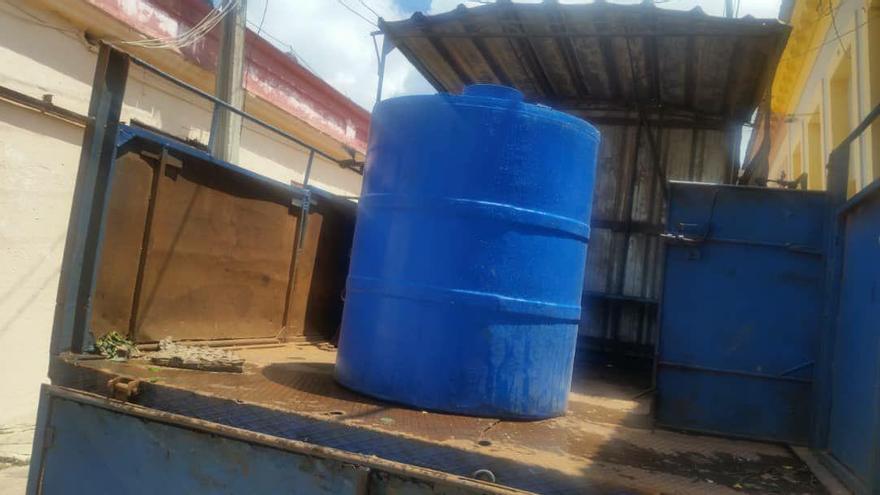
![]() 14ymedio, Havana, June 22, 2020 — Entire neighborhoods in San Antonio de los Baños, in Artemisa, have been without running water for more than a week. The frequency of delivery has been deteriorating for several months, and the only response those affected receive is that “the water table is dry”.
14ymedio, Havana, June 22, 2020 — Entire neighborhoods in San Antonio de los Baños, in Artemisa, have been without running water for more than a week. The frequency of delivery has been deteriorating for several months, and the only response those affected receive is that “the water table is dry”.
“The water system in our zone has presented problems for several months. We began having service one day on and one day off, then every 72 hours, but in these last 10 days, we don’t have service at all,” explains Pilar, one of the neighbors.
San Antonio de los Baños is the most important municipality in Artemisa, because it’s where the Ariguanabo River flows for 14 kilometers. Traditionally, water delivery in the zone has been supplied from the river basin, especially from springs and wells next to the river, but the drought, industrial residue and overexploitation have severely damaged its flow.
“Water delivery, in water trucks, is prioritized for families that have ill, bedridden members, says another neighbor, who notes that the most affected zones are Nodarse and Palenque. Families have to carry water in tanks and buckets long distances in order to perform domestic chores and maintain the hygiene measures recommended to prevent contagion by the coronavirus.
“This town is known for its river and its waters, but now we should change the name, because nothing remains of the “baños” [baths], and the river is almost dead, and there is no water in the houses,” explains an employee of the Las Yagrumas Hotel. “We have a bedridden old woman in my family, and in all these days we’ve only received 20 liters of water to be able to wash her.”
For farmers in the zone, the lack of water is also a problem, although several of them interviewed by this newspaper benefit from private wells. “I use a well in the courtyard for the whole field and the crops, but in the house, water normally comes to us from the street, and in 12 days we haven’t even seen one drop,” says Raudel Ramos, a farmer who lives on the periphery of San Antonio.
“The whole aqueduct network is very damaged and deteriorated,” adds Ramos. “For years here we’ve had problems with water that arrives dirty, contaminated, and even with a bad smell, because the plant hasn’t been maintained for a long time.”
The network of the San Antonio de los Baños aqueduct began construction in 1894 and initially took water from a spring of the Catalina in the Quintica together with the Ariguanabo River. “The whole structure is very old, and now we’re paying the price.”
In light of the complaints of the residents, the local radio station, Radio Ariguanabo, last week interviewed the provincial director of Acueducto y Alcantarillado de Artemisa [Water and Sewerage of Artemisa], Miguel Jiménez Álvarez, who explained that the prolonged drought of the last years has dried up the water table and service will continue to be unstable for several months, also owing to repairs in the infrastructure.
The situation, faced by the almost 49,000 inhabitants of the municipality and their constant complaints brought about on June 12 the emergency meeting of a Temporary Work Group, created by the National Institute of Hydraulic Resources for hydraulic regularization of the Ariguanabo River Basin, but the service has not improved nor have there been new explanations.
Translated by Regina Anavy
_______________
COLLABORATE WITH OUR WORK: The 14ymedio team is committed to practicing serious journalism that reflects Cuba’s reality in all its depth. Thank you for joining us on this long journey. We invite you to continue supporting us by becoming a member of 14ymedio now. Together we can continue transforming journalism in Cuba.
